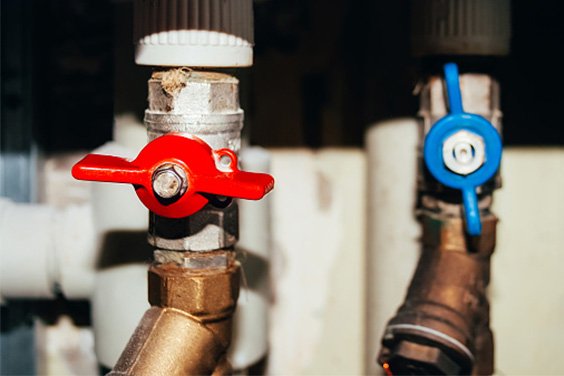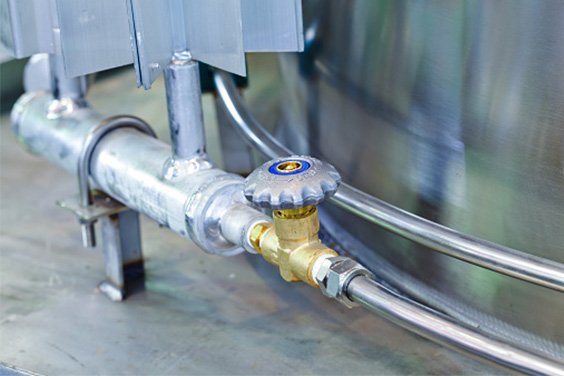When talking about industrial valve systems, you might hear the terms “fail close” and “fail open.” Don’t worry if they sound confusing at first! These terms just describe what a valve does when something goes wrong, like a power failure. Choosing the right type matters for keeping everything safe and running smoothly.
Think of it like this:
- Fail close: Imagine you have a water faucet, and you want it to stop the water if something breaks. That’s what a fail-close valve does. It closes automatically during a failure to shut off the flow. Handy, right?
- Fail open: Now think about a garden hose that opens up to keep watering even if something stops working. A fail-open valve does just that. It stays open during a failure to keep things flowing.
These two types of valves have jobs that fit different needs. Some systems might need to stop everything for safety, while others need to keep going no matter what. Cool, huh?
Stay with me as we explore how these valves work, why they’re important, and how you can use them to design awesome systems!
What Is a Fail Close Valve?
A fail close valve (also known as a normally closed valve) is a type of valve that automatically closes when the system loses power, pressure, or control signals. This default closed position ensures that the flow of fluids or gases is stopped during an emergency or failure scenario. Fail close valves are commonly used in systems where stopping the flow is critical for safety or to prevent damage.
For example, in chemical processing plants, a fail close valve might be used to isolate potentially hazardous chemicals in case of a system failure. Similarly, in fire suppression systems, fail close valves can prevent water wastage by keeping the supply closed when not in use, acting as a fail safe measure.
Pros Of Fail Close Valve
- Enhanced Safety in Hazardous Scenarios
Fail close valves are ideal for situations where stopping the flow is essential to prevent accidents or environmental damage. For example, in oil and gas pipelines, a closed valve can prevent spills or explosions caused by uncontrolled flow. - Leak Prevention
These valves help minimize leaks during system malfunctions, ensuring that hazardous substances are contained. - Energy Efficiency
Since the valve remains in a closed position by default, it often requires less energy to maintain its position when the system is inactive. - Regulatory Compliance
Many industries, such as chemical processing and pharmaceuticals, have strict regulations requiring fail close mechanisms to protect workers and the environment.
Cons Of Fail Close Valve
- Limited Flow During Failures
A fail close valve shuts off the flow entirely, which might not be desirable in processes requiring continuous operation, such as cooling systems or emergency water supplies. - System Restart Challenges
After a fail close event, restarting the system may require manual intervention, which can lead to downtime. - Risk of Overpressure
If a fail close valve shuts off in a pressurized system, it can lead to overpressure and potential damage to upstream equipment unless pressure relief mechanisms are in place.
What Is a Fail Open Valve?
A fail open valve (also known as a normally open valve) is designed to open automatically when the system loses power, pressure, or control signals. This ensures that the fluid or gas flow continues even during a failure. Fail open valves are typically used in systems where maintaining flow is critical for safety or operational continuity, allowing for a fail open and fail closed strategy.
For instance, in emergency cooling systems for power plants, fail open valves ensure that coolant continues to flow to prevent overheating, maintaining a fail open and fail closed balance. Similarly, in fire sprinkler systems, fail open valves allow water to flow uninterrupted during emergencies.
Pros Of Fail Open Valve
- Ensures Continuous Flow
In applications where uninterrupted flow is vital, such as cooling systems or emergency water supplies, fail open valves provide a fail-safe mechanism to maintain operation. - Prevents Equipment Damage
By allowing flow during a failure, fail open valves can help avoid overheating or overpressure, which could otherwise damage equipment. - Ideal for Emergency Situations
In systems like fire suppression or flood control, fail open valves ensure the system remains operational when it’s needed most. - Reduces Downtime
Since the valve remains open during a failure, systems can continue operating, reducing the need for immediate manual intervention.
Cons Of Fail Open Valve
- Potential Safety Risks
In certain scenarios, an open valve could lead to uncontrolled flow of hazardous substances, increasing the risk of accidents or environmental damage, particularly in the event of a failure. - Increased Leakage Risk
A fail open valve may lead to leaks or wastage of valuable resources like water, gas, or chemicals if not properly managed. - Higher Energy Consumption
Maintaining an open position in some systems may consume more energy, especially if the valve requires active control to remain open during normal operations. - Regulatory Limitations often dictate the use of fail open or closed technologies in various industries to ensure safety and compliance.
Some industries may discourage or prohibit fail open valves due to the risks associated with uncontrolled flow, particularly in hazardous environments where a fail safe approach is necessary.
Key Difference Between Fail Close And Fail Open Valve
The primary difference between fail close and fail open valves lies in their default position during a failure:
- A fail close valve shuts off the flow when power or control is lost.
- A fail open valve allows the flow to continue under similar circumstances.
Key Factors To Consider When Choosing Between Fail Close And Fail Open Valves:
- Safety Requirements
- Use fail close valves in scenarios where stopping the flow prevents accidents, such as hazardous chemical containment.
- Use fail open valves where maintaining flow ensures safety, such as emergency cooling or fire suppression systems.
- Operational Continuity is crucial in systems utilizing fail open or closed mechanisms to ensure safety and efficiency.
- Fail open valves are better suited for systems requiring uninterrupted operation.
- Fail close valves may lead to downtime but are necessary for applications prioritizing containment, especially in the event of a power failure.
- System Design
- Consider the potential impact of overpressure or resource wastage when selecting a valve type.
- Ensure proper relief mechanisms or backup controls to mitigate risks associated with the valve’s default position, particularly in the event of a failure.
- Industry Standards
- Understand the regulatory requirements for your industry to determine whether fail close or fail open mechanisms are more appropriate.
- Cost and Maintenance
- Fail close valves may require more frequent maintenance after shutoff events, especially in high-pressure systems.
- Fail open valves could lead to higher operational costs due to potential wastage or energy consumption.
Summary Table: Fail Close vs. Fail Open Valve
| Feature | Fail Close Valve | Fail Open Valve |
|---|---|---|
| Default Position | Closes during a failure | Opens during a failure |
| Primary Purpose | Stops the flow for safety or containment | Maintains flow for operational continuity |
| Common Applications | Hazard containment (e.g., chemicals, oil) | Safety-critical systems (e.g., cooling, fire) |
| Risk During Failure | Overpressure if no relief mechanism exists | Uncontrolled flow or resource wastage |
Applications Table: Fail Close vs. Fail Open Valve Use Cases
| Application | Recommended Valve Type | Reason |
|---|---|---|
| Chemical Processing | Fail Close | Prevents hazardous leaks and ensures containment. |
| Fire Suppression Systems | Fail Open | Ensures water flow to combat fires during emergencies. |
| Oil and Gas Pipelines | Fail Close | Prevents spills or explosions in case of a pipeline failure. |
| Power Plant Cooling Systems | Fail Open | Maintains coolant flow to prevent overheating and equipment damage. |
| High-Pressure Industrial Systems | Fail Close | Avoids pressure buildup and ensures system safety. |
| Water Supply Systems | Fail Open | Ensures uninterrupted water flow during power outages or failures. |
Conclusion
Choosing between fail close and fail open valves depends on a careful assessment of your system’s requirements, safety considerations, and operational priorities. While fail close valves are ideal for applications where containment is critical, fail open valves are better suited for systems requiring continuous flow during emergencies, ensuring a fail safe operation in the event of a failure. Understanding the pros, cons, and key differences of these valve types can help you make an informed decision and ensure the safety and efficiency of your system.
By considering factors like safety, operational continuity, and industry standards, you can select the right valve type to meet your needs and comply with regulatory requirements. Whether you prioritize stopping the flow or keeping it running, both fail close and fail open valves play vital roles in modern engineering and industrial applications.

